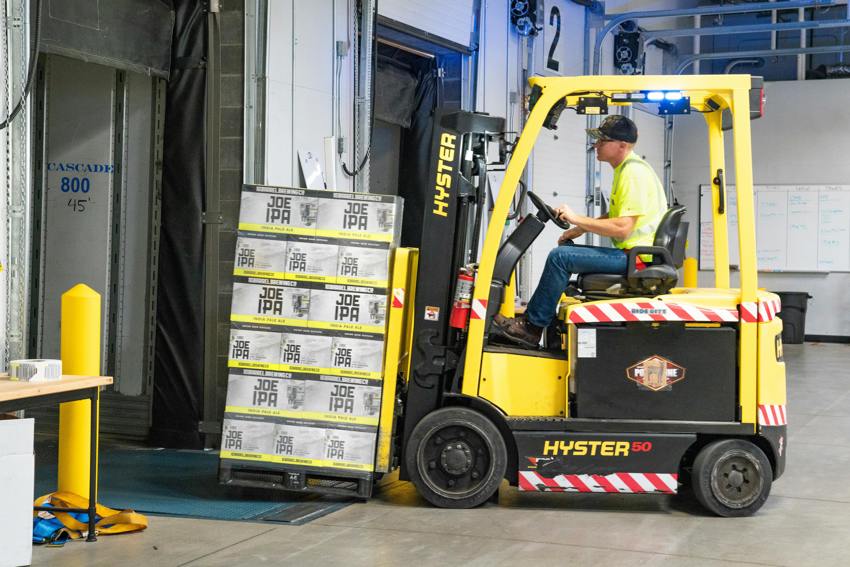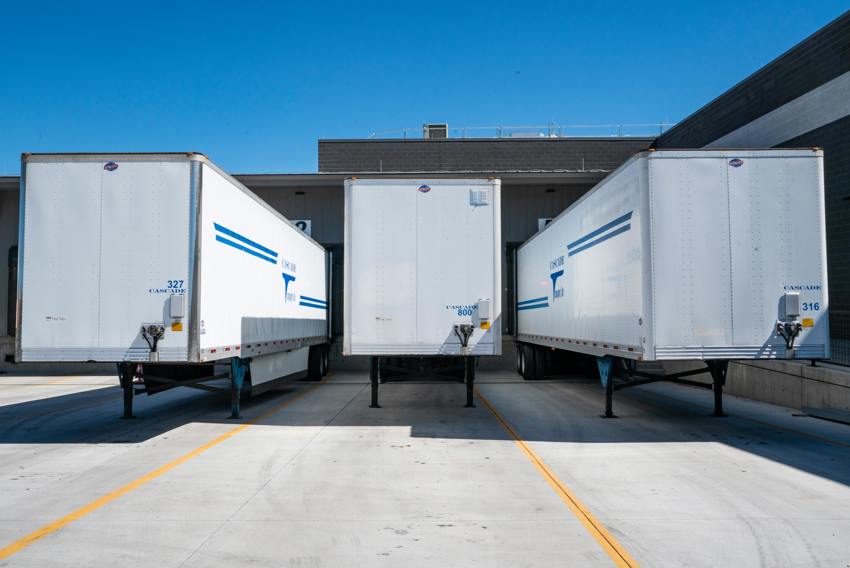What’s New in Business Central 2025 Release Wave 2
The Autumn brings the second major release of the year for Business Central, as part of the 2 wave annual update cycle. Here we look at the highlight features.
Whether your business is B2B or B2C, your order fulfilment process can have a dramatic impact on your brand and customer loyalty. You play a vital role in optimising the entire process to enhance customer satisfaction and streamline operations.

Getting your process control right can reduce operational costs and improve delivery timelines. This not only boosts efficiency but also positions your business favourably in a competitive marketplace.
Incorporating advanced solutions like automation and real-time tracking can significantly enhance your order fulfilment process. These tools help you manage inventory more effectively and improve communication with customers, leading to boosted trust and loyalty. By focusing on these areas, you can overcome common hurdles in the fulfilment landscape.
Exploring strategies to optimise supply chain management can further bolster your business’ resilience in the face of growing local and global demands. Understanding the importance of compliance and efficient handling of international shipments ensures a seamless operation that supports your business's reputation and growth.
Streamlined order fulfilment is non-negotiable, with customer demands higher than ever before. Whether opting for in-house, third-party, or hybrid fulfilment, understanding these options can enhance efficiency and customer satisfaction.
In-house fulfilment offers greater control over processes, which suits businesses with unique requirements or a strong desire to maintain brand integrity. You can tailor your operations more precisely to the demands of your customer base. As your business grows, challenges such as scaling and resource management might arise.
Understanding your customer base is key. If your customers expect rapid delivery and consistent updates, your fulfilment model must support these demands. Prioritising customer expectations ensures that your chosen business model aligns with market needs, driving satisfaction and loyalty.
In-house fulfilment provides direct control over inventory and shipping, ideal for brands needing specific customisation. However, it might require significant investment in staff and infrastructure.
Third-party fulfilment involves partnerships with firms specialising in storage and shipping. This option eases logistical burdens, can be cost-effective for businesses without existing infrastructure and often allows for quick scaling. On the downside, you're putting your business reputation in the hands of third parties.
Hybrid models integrate both approaches, giving you flexibility. A hybrid model lets you leverage the control of in-house operations while utilising the resources of third-party fulfilment for peak times or areas beyond reach. This adaptability can be beneficial for balancing costs and efficiency in response to fluctuating demand.

Creating an effective order fulfilment process involves developing a customised strategy and integrating robust inventory management. These key elements ensure streamlined operations, enhancing efficiency and customer satisfaction.
To enhance the entire order fulfilment process, focus on creating a strategy that caters to your unique business needs. Begin by evaluating your current fulfilment operations to identify areas for improvement. Consider factors like order volume, customer demands and distribution channels.
Develop a plan that aligns with your business goals and incorporate technology, such as automation tools, to reduce errors and speed up processing times. Regularly review and update your strategy to adapt to market changes. A well-crafted fulfilment strategy ensures cost-effectiveness and reliable service, meeting the expectations of your customers.
Efficient inventory management is the first step in streamlining your order fulfilment process. Use inventory management software, like the tailored modules available in Dynamics 365 Business Central, to maintain a real-time overview of stock levels, reducing the risk of overstocking or shortages. This software can automate tasks like restocking and inventory tracking.
Implement just-in-time (JIT) inventory practices to align stock levels with demand, minimising storage costs. Combining this with accurate forecast planning helps in anticipating demand and avoiding bottlenecks. Effective inventory management not only improves operational efficiency but also enhances customer satisfaction by ensuring timely deliveries.

To optimise your supply chain management, focusing on supplier relationships and adopting advanced technologies can significantly improve efficiency. Understanding these elements ensures streamlined operations and enhances the performance of your entire supply chain.
Strong supplier relationships are vital for successful supply chain management. Engaging with your suppliers can help secure favourable terms and prevent disruptions. Regular communication and collaboration can also lead to more reliable and timely deliveries.
Utilising suppliers' distribution centres effectively can help you manage inventory and streamline distribution. By strategically choosing centres near key markets, you minimise transportation costs and delivery times. Assess your distribution channels and suppliers regularly to ensure they align with your current business objectives and market demand.
Building trust with suppliers can also lead to innovative ideas, enhancing your overall supply chain.
Embracing the latest technologies transforms supply chain operations. Implementing systems like advanced analytics and AI can offer better insights into your supply chain. These tools help identify bottlenecks and forecast demand more accurately.
Adopt automation in distribution centres to improve efficiency. Automated picking and packing systems reduce errors and speed up the process, while investing in IoT devices enhances the tracking and monitoring of goods, ensuring product quality.
Innovative technologies not only streamline operations but also provide you with a competitive edge. Stay updated with emerging trends to continually refine your supply chain strategy.

Streamlining order fulfilment involves cutting down costs and reducing delivery times to enhance customer satisfaction. By focusing on how you manage your inventory and implementing efficient shipping methods, you can significantly improve your operational efficiency.
Businesses should aim to keep optimal inventory levels that avoid overstocking, which increases carrying costs, while always ensuring they can meet customer demands. Use technology to track stock and forecast demands accurately, which can help prevent unnecessary expenses.
Another key is utilising warehouse space wisely. Consider adopting vertical storage solutions to maximise available space. This can reduce the need for additional storage facilities and cut down on inventory storage costs. An organised warehouse setup enhances picking efficiency, further reducing fulfilment costs.
Reducing delivery times is vital for customer satisfaction. Implementing methods like same-day delivery can be beneficial, but it requires a well-coordinated process. Strategise your shipping routes and collaborate with your courier services to ensure timely delivery.
Using automation in packing and shipping can also save time, minimising errors and speeds up the overall process. Implementing advanced tracking systems keeps customers informed and helps address any issues swiftly, further enhancing your customers' delivery experiences.

Using technology in order fulfilment can greatly enhance efficiency. By selecting the right software and gaining real-time visibility, you can streamline processes, improve inventory accuracy and ensure timely deliveries.
Not all software solutions are equal, so you should assess your unique business needs. Look for software with features like integrated management systems and real-time inventory visibility. These features, which are available in Dynamics 365, can ensure orders are processed accurately and efficiently.
Consider platforms that offer easy integration with existing systems. This seamless integration reduces manual errors, enhances productivity and ensures your fulfilment process is as smooth as possible. Investing in comprehensive fulfilment software can enhance your business's reliability and customer satisfaction.

Real-time visibility is indispensable for maintaining accurate inventory tracking. Adopting technologies like barcode scanning and RFID can help you achieve this. These tools allow you to monitor inventory levels and locations instantly, minimising delays and errors.
Real-time management software can provide timely updates, enabling you to respond swiftly to changes in demand. This leads to more informed decision-making and better allocation of resources. By leveraging these technologies, you ensure your fulfilment operations remain agile and adaptable to the ever-changing market.
Streamlined order fulfilment is essential for meeting customer expectations. By focusing on timely deliveries and making unboxing exciting, you can improve customer satisfaction, build loyalty, and instil trust.
When your orders arrive on time, customers feel valued and trust in your services grows. Late or inaccurate deliveries can lead to customer service issues and diminish customer loyalty.
To enhance accuracy, invest in technology that tracks orders, updates inventories and ensures precise packaging. Maintain open communication with your team to monitor logistics. By reducing errors, you not only save costs but also increase customer satisfaction.
Offering various delivery options lets customers choose what suits them best. Whether they prefer standard, express or next-day delivery, these choices can help meet diverse customer expectations. Make sure each delivery option is reliable to maintain customer trust.
Successfully managing international fulfilment requires careful attention to trade regulations and reliable shipping practices. By understanding the intricacies of cross-border trade and selecting the right partners, you can streamline processes and maintain compliance.
When engaging in cross-border trade, it is vital to familiarise yourself with various tax regulations in your target countries. Each nation may impose different taxes, such as value added tax (VAT) or goods and services tax (GST). Navigating these can be complex, so you'll need accurate documentation and records to ensure compliance.
It's helpful to employ digital tools that automate tax calculation and reporting and work in multiple currencies. You should also consider consulting with tax professionals who specialise in international shipping and trade. These experts can provide guidance on optimising your processes and managing tax obligations effectively.
Selecting the right shipping carrier is crucial for minimising risks in international fulfilment. Research various shipping rates and services to find a provider that meets your needs. Goods crossing international borders are subject to customs checks, so ensure your chosen carrier has experience in customs compliance.
Working with third-party logistics providers can also be advantageous. These partners offer expertise in managing logistics, helping you handle complex international shipping tasks. They can negotiate favourable shipping rates and manage relationships with multiple carriers, reducing the risk of delays and lost parcels.
Additionally, consider insurance to protect against unforeseen circumstances such as damage during transit. A careful evaluation of shipping partners and risks can greatly improve your cross-border operations.

Efficient order fulfilment requires addressing key challenges and adapting to growing business needs. Managing seasonal peaks and reducing errors can enhance performance and ensure customer satisfaction.
Seasonal peaks, like the holiday season, present unique challenges. Preparing involves planning and flexibility in operations and staffing. You should forecast demand accurately and adjust inventory levels accordingly. Implementing temporary workforce strategies can also support increased workload, helping manage peaks effectively while maintaining service quality.
Understanding evolving customer demands is crucial. Tracking market trends and customer feedback allows you to tailor your services. Utilising automation tools can ease the burden during busy periods, ensuring efficient order processing. Adapting in these ways helps you keep pace with changes and meet client expectations successfully without disruption.

Errors and delays in order fulfilment can result from human error and inefficient processes. To address this, employ technology solutions that automate repetitive tasks, like barcode scanning and warehouse management systems. These tools can reduce manual errors significantly, improving accuracy and speed in your operations.
Fostering a culture of continuous improvement is also beneficial. Encouraging feedback from your team helps identify weak points and potential risks, allowing you to implement corrective measures proactively. Regular training sessions are important for ensuring your team is well-versed in best practices and system updates, enhancing their ability to handle orders efficiently and reduce potential disruptions in the fulfilment process.
Understanding order fulfilment is essential for efficiency and customer satisfaction. This section addresses common questions about optimising order fulfilment processes, leveraging technology and managing inventory.
An effective order fulfilment process includes inventory management, order processing, packing and shipping. Managing each step efficiently ensures timely delivery and customer satisfaction.
Businesses can adopt technologies like barcode scanning and RFID to automate and track inventory movements. These strategies help maintain accurate stock levels and enhance order fulfilment efficiency.
An integrated system ensures orders are processed quickly and accurately, leading to faster delivery times. This enhances customer satisfaction by reducing mistakes and improving communication. Integration promotes a seamless experience for both the business and the customer.
Technology, such as real-time inventory tracking, automates tasks and reduces manual errors. RFID and barcode scanning keep inventory data up-to-date, helping businesses manage stock efficiently.

Employ methods like just-in-time inventory to reduce holding costs and prevent overstocking. Utilising real-time tracking systems gives you a clear view of inventory levels, helping maintain a balanced supply. These methodologies ensure efficient resource use and reduce waste.
The Autumn brings the second major release of the year for Business Central, as part of the 2 wave annual update cycle. Here we look at the highlight features.
After a recent visit to the Digital Manufacturing 2day event in Coventry and an insightful presentation by Lord Chris Holmes, I thought I would delve a bit deeper into the current AI regulation facing UK industry.
Choosing the right ERP system when moving on from Sage 50 can shape how efficiently your business grows and adapts. If you want advanced features, greater flexibility and easier integration with familiar Microsoft tools, Microsoft Dynamics 365 Business Central is often the stronger option compared to Sage 200. As real-time data insight, automation and scalability are now necessities and not luxuries, your ERP upgrade decision is more important than ever.